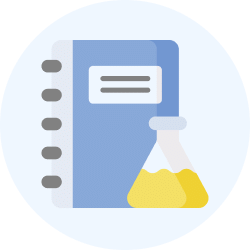Class 7 Geography Chapter 3 Question Answers - Our Changing Earth
Very Short Q & A :
Q1: The lithosphere is broken into a number of plates known as…………………….
Ans: Lithospheric plate
Q2: The molten magma inside the earth moves circularly.( T/F)
Ans: True
Q3: Define focus.
Ans: The place in the crust where the movement starts is called the focus.
Q4: Which of the following is not a part of earthquake waves:
1. S
2. P
3. L
4. T
Ans: T
Q5: Which of the following machine is used to measure earthquake?
a. Richter scale
b. Seismograph
c. Sphygmomanometer
d. Anemometer
Ans: Seismograph
Q6: ………………is used to measure the magnitude of an earthquake.
Ans: Richter scale
Q7: The highest waterfall is…………………falls of Venezuela.
Ans: Angel
Q8: What is vent?
Ans: The narrow opening of volcanoes is called a vent.
Q9: Sudden movements in the Earth's interior are caused due to –
a. Exogenic force
b. Plutonic force
c. Endogenic force
d. None of these
Ans: Endogenic
Q10: The strength of the earthquake decreases away from the centre. (T/F)
Ans: True
Q11: Match the following –
 Ans:
Ans: 
Q12: A ………………is a vent in the earth crust through which molten material erupts suddenly.
Ans: Volcano
Q13: When the rivers began to break up into several streams called………………….
Ans: Distributaries
Q14: Which among the following is not the agent of weathering and erosion?
a. Wind
b. Water
c. Ice
d. Heat
Ans: Heat
Q15: The depositional feature of a glacier is-
a. Moraine
b. Beach
c. Flood plain
Ans: Moraine
Q16: Focus lies just above the epicentre (T/F)
Ans: False
Q17: Severe earthquake calculated above the 5.0 magnitude. (T/F)
Ans: False
|
63 videos|366 docs|46 tests
|
FAQs on Class 7 Geography Chapter 3 Question Answers - Our Changing Earth
| 1. What are the major changes that our Earth undergoes? |  |
| 2. How do natural processes shape the Earth's surface? |  |
| 3. What is the impact of human activities on the environment? |  |
| 4. How does the climate change affect the Earth? |  |
| 5. What are the effects of earthquakes and volcanic eruptions on the Earth? |  |























